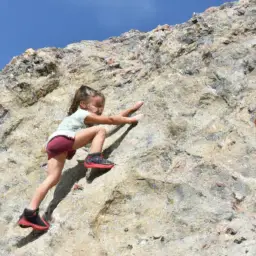Are you looking to improve your personal development skills? Developing grit and resilience are two important aspects to consider.
Grit is defined as having a passion and perseverance for long-term goals, while resilience is the ability to adapt and bounce back from challenges and setbacks.
Both grit and resilience are crucial for success in various aspects of life, including career advancement, personal relationships, and overall well-being.
In this article, we will explore the differences between grit and resilience, the benefits of each, and how to develop these skills.
By understanding the nuances of each, you can identify which skill may be more beneficial for your personal development journey and learn strategies to enhance your abilities in both areas.
Key Takeaways
- Grit and resilience are both crucial for success in various aspects of life and take time and effort to cultivate.
- Balancing long-term and short-term perspectives is important in achieving success and maintaining motivation.
- Emotional intelligence and mental toughness are important in developing resilience and pushing through difficult situations.
- Consistently challenging oneself, building perseverance, and reframing setbacks as opportunities for growth are key in developing both grit and resilience.
Understanding Grit
Wanna know what grit is and how it can help you achieve your goals? Let’s dive into it!
Grit is the combination of resilience and perseverance when facing challenges or obstacles. It’s the determination to keep going even when things get tough, to push through discomfort, and to maintain focus on your long-term goals.
Grit is an important factor in personal development because it allows you to overcome setbacks and achieve your objectives. When you have grit, you’re less likely to give up when faced with challenges and more likely to stay committed to your goals.
Cultivating grit takes time and effort, but the rewards are worth it. With determination and perseverance, you can accomplish anything you set your mind to.
Understanding Resilience
When faced with adversity, it’s like being in a stormy sea, but resilience is the anchor that keeps you steady.
Building resilience through adversity means being able to bounce back from setbacks and challenges. It’s about developing a mindset that is able to adapt and overcome obstacles, while also maintaining a positive outlook.
The role of mindset in resilience is crucial. A growth mindset allows you to see challenges as opportunities for growth and learning, rather than as roadblocks. By reframing negative experiences as opportunities for growth, you can build a strong foundation for resilience.
It’s important to remember that building resilience is a process that takes time and effort, but it’s a skill that can be developed and strengthened with practice.
The Differences Between Grit and Resilience
When it comes to personal development, it’s important to understand the differences between grit and resilience.
Grit focuses on achieving long-term goals by staying committed and persevering through challenges, while resilience emphasizes adaptability and bouncing back from setbacks in the short-term.
Additionally, grit is driven by passion and motivation, while resilience requires emotional regulation to cope with adversity.
Focus on Goals vs. Adaptability
To truly develop your personal resilience and grit, you must balance your focus on achieving your goals with the ability to adapt and shift course when necessary. While goal setting techniques can help you stay on track and motivated, being too rigid in your planning can lead to frustration and burnout when obstacles inevitably arise. On the other hand, flexibility in planning allows you to pivot and adjust your approach as needed, while still keeping your ultimate goals in sight.
To illustrate this balance, consider the following table:
| Goal Setting | Adaptability | Outcome |
|---|---|---|
| Clearly define specific, measurable goals | Remain open to feedback and adjust course as needed | Achieve goals more efficiently and effectively |
| Stay focused on long-term objectives | Be willing to experiment and try new approaches | Overcome obstacles and find creative solutions |
| Track progress and hold yourself accountable | Recognize when a change in direction is necessary | Build resilience and perseverance |
By incorporating both goal setting and adaptability into your personal development plan, you can cultivate the grit and resilience necessary to achieve your ambitions and overcome challenges along the way. Remember, it’s not about being perfect or having everything figured out. It’s about embracing the journey and being willing to adapt and grow along the way.
Long-Term vs. Short-Term Perspective
Balancing a long-term and short-term perspective is crucial for achieving success and maintaining motivation.
On one hand, immediate gratification can be tempting and rewarding, but it often comes at the cost of delayed rewards. When we focus solely on the short-term, we may miss out on the bigger picture and the long-term growth that comes with it. It’s important to recognize that progress takes time and effort, and that we may not always see immediate results.
By keeping our eyes on the bigger picture and setting long-term goals, we can stay motivated and committed even through short-term setbacks.
At the same time, short-term setbacks are inevitable in any personal development journey. It’s important to have resilience and grit in these moments, and to recognize that these setbacks are just temporary roadblocks on the way to our long-term goals. By keeping a positive attitude and focusing on the bigger picture, we can overcome these setbacks and continue to make progress towards our goals.
Ultimately, balancing a long-term and short-term perspective is about finding a middle ground between immediate gratification and delayed rewards, as well as between short-term setbacks and long-term growth. By doing so, we can achieve success and maintain our motivation in the face of challenges.
Passion vs. Emotional Regulation
Achieving success in personal and professional pursuits requires you to understand the balance between your passion and emotional regulation. It’s necessary to have a strong desire for your goals, but it’s equally important to have self-control and emotional intelligence to handle setbacks and failures.
Passion vs. self-control is a common debate in personal development, and finding the right balance is crucial to achieving your desired outcome. Emotional intelligence vs. mental toughness is another aspect of this balance that needs to be considered.
Emotional intelligence allows you to manage your emotions and understand others’ feelings, while mental toughness helps you push through difficult situations and remain focused on your goals. Both are necessary for success, and finding the right balance between the two will help you achieve your desired outcome.
Remember, passion and emotional regulation are not mutually exclusive, and finding the right balance between the two is key to achieving success in your personal and professional life.
The Benefits of Grit and Resilience
You’ll love the way grit and resilience can help you overcome challenges and achieve success in all areas of your life. These two traits work together to improve your mental toughness and increase your perseverance.
Here are a few benefits of cultivating grit and resilience:
-
Improved problem-solving skills: When you face obstacles, you’ll be better equipped to find solutions and work through them.
-
Greater self-confidence: As you succeed in overcoming challenges, you’ll build confidence in your abilities.
-
Enhanced adaptability: When unexpected situations arise, you’ll be more flexible and able to adjust to changes.
By developing grit and resilience, you’ll be able to face challenges with a positive attitude and the determination to succeed. These traits will help you grow and achieve your goals, no matter how big or small.
How to Develop Grit and Resilience
To cultivate grit and resilience, it’s important to consistently challenge yourself and push beyond your comfort zone. Building perseverance is key to developing both traits. Setting small goals and consistently working towards them can help you build endurance and resilience. You can start by acknowledging your weaknesses and working on improving them consistently. This will help you build the confidence necessary to tackle greater challenges.
Managing setbacks is another important skill to develop grit and resilience. It’s important to remember that setbacks are a natural part of any journey towards success, and they can actually make you stronger and more determined if you learn to manage them properly. One way to manage setbacks is to reframe them as opportunities for growth. Another way is to practice mindfulness and self-care, which can help you stay focused and energized even when facing difficult situations. With consistent practice and effort, you can develop grit and resilience, which will help you achieve your goals and thrive in any situation.
| Building Perseverance | Managing Setbacks |
|---|---|
| Set small goals and consistently work towards them | Reframe setbacks as opportunities for growth |
| Acknowledge weaknesses and work on improving them | Practice mindfulness and self-care |
| Build confidence to tackle greater challenges | Stay focused and energized in difficult situations |
Frequently Asked Questions
What are some examples of situations where grit and resilience are needed in personal development?
When it comes to personal development, there are countless situations where both grit and resilience are necessary.
For example, if you’re trying to develop a new skill or habit, you may encounter setbacks and failures along the way. It takes grit to push through these challenges and keep going, even when you feel discouraged.
Similarly, developing resilience is crucial when facing unexpected obstacles or adversity. Being able to bounce back and learn from tough experiences can help you grow and become more resilient in the long run.
While there are certainly benefits to both grit and resilience, it’s important to remember that there can also be drawbacks. For instance, pushing yourself too hard can lead to burnout, while being too resilient can make it difficult to ask for help when you need it.
Ultimately, finding the right balance between grit and resilience is key to achieving your personal development goals.
Can grit and resilience be developed simultaneously, or should they be approached separately?
When it comes to developing grit and resilience, the question arises whether they should be approached separately or together.
Grit and resilience are complementary traits that help you overcome challenges and achieve your goals. Developing both at the same time can be beneficial because they work together to create a strong foundation for personal development.
However, it’s also possible to focus on one trait more than the other depending on your personal needs and goals. Whether you choose to develop both simultaneously or focus on one, the important thing is to keep pushing forward and never give up on your path to personal growth.
Are there any negative consequences to developing too much grit or resilience?
If you focus too much on developing grit or resilience, there are potential downsides to consider. For example, if you become too fixated on pushing through challenges and persevering no matter what, you may miss opportunities to pivot and try new strategies.
Similarly, if you become too resilient and adept at bouncing back from setbacks, you may not take the time to process and learn from your experiences. It’s important to balance grit and resilience with other personal development traits, such as adaptability, creativity, and emotional intelligence.
By cultivating a well-rounded set of skills and qualities, you’ll be better equipped to navigate life’s ups and downs in a healthy and sustainable way.
How do grit and resilience relate to other traits commonly associated with personal development, such as determination and perseverance?
When it comes to personal development, traits like determination, perseverance, grit, and resilience are often mentioned. These traits are interconnected, and developing one can lead to the development of others.
However, grit and resilience are unique in that they are specifically related to overcoming adversity. Resilience is the ability to bounce back from setbacks, while grit is the perseverance and passion for long-term goals.
Emotional intelligence also plays a role in personal development, as it involves self-awareness, self-regulation, motivation, empathy, and social skills. By comparing grit and resilience to emotional intelligence, you can see how they all work together to help you navigate challenges and achieve your goals.
Adversity plays a crucial role in developing grit, as it provides the necessary challenges and opportunities for growth. Ultimately, a combination of all these traits can lead to a more successful and fulfilling life.
Are there any cultural or societal factors that can impact the development of grit and resilience?
Cultural influences and gender differences can have a significant impact on the development of grit and resilience.
Different societies may value these traits differently, with some emphasizing the importance of perseverance and determination, while others may prioritize other qualities.
Additionally, gender roles and expectations can also play a role in how individuals develop these traits. For example, women may be socialized to prioritize empathy and emotional intelligence over grit and resilience, while men may be encouraged to display toughness and perseverance.
It’s important to recognize these cultural and societal factors when considering personal development, and to work towards building a well-rounded set of skills and qualities.
Conclusion
So, there you have it! You now know the difference between grit and resilience, and how they can both be powerful tools in personal development.
Grit is all about perseverance and sticking with something even when it’s tough, while resilience is the ability to bounce back from adversity.
Both grit and resilience have their own unique benefits, and developing both can help you become a more well-rounded and successful person.
To develop grit, focus on setting goals, practicing perseverance, and embracing challenges. To develop resilience, work on building a strong support system, practicing self-care, and reframing negative experiences.
With these tools in your arsenal, you’ll be well-equipped to handle whatever life throws your way and come out even stronger on the other side.
So go ahead, embrace the power of grit and resilience and watch your personal development soar!




















































































































